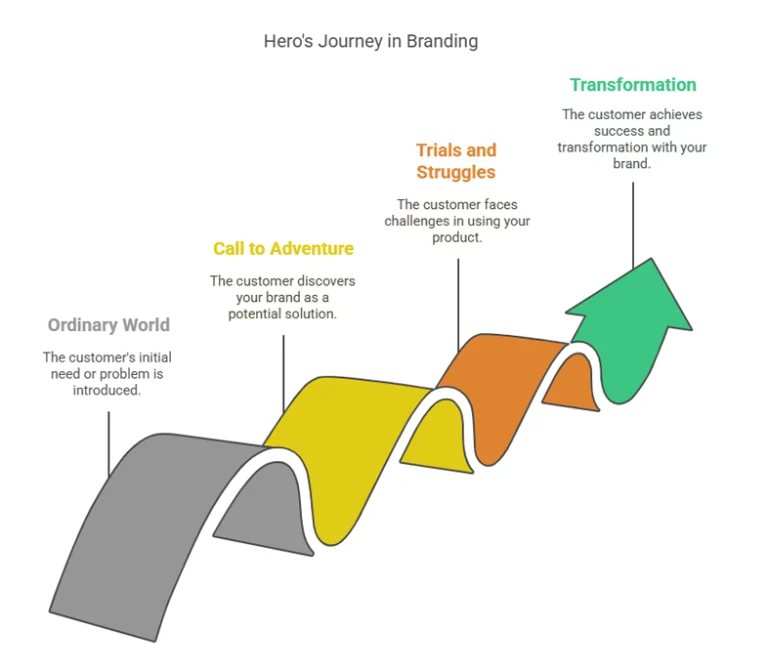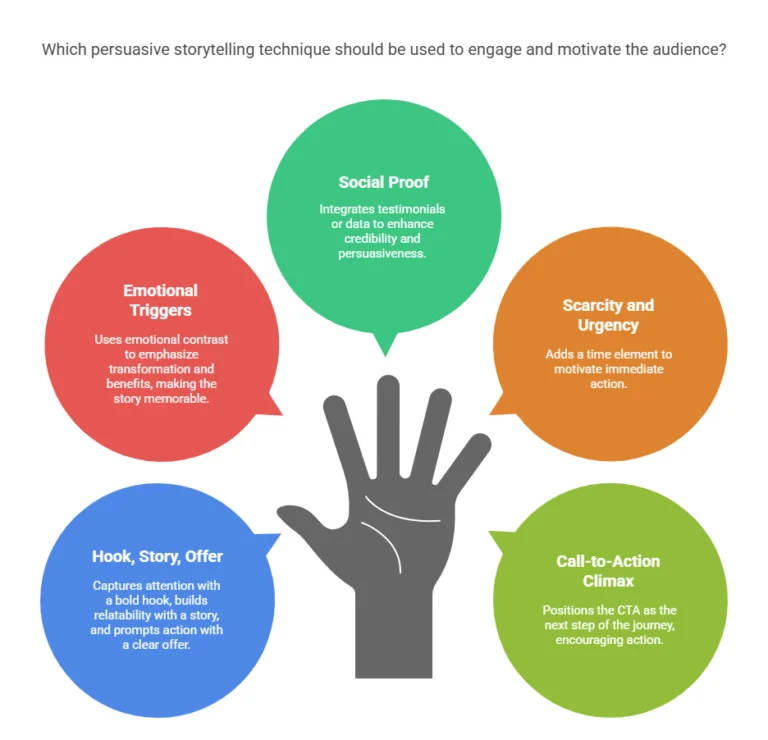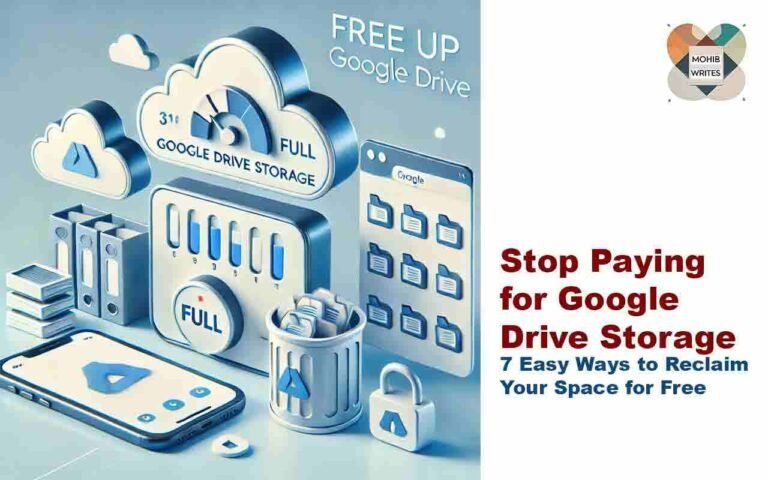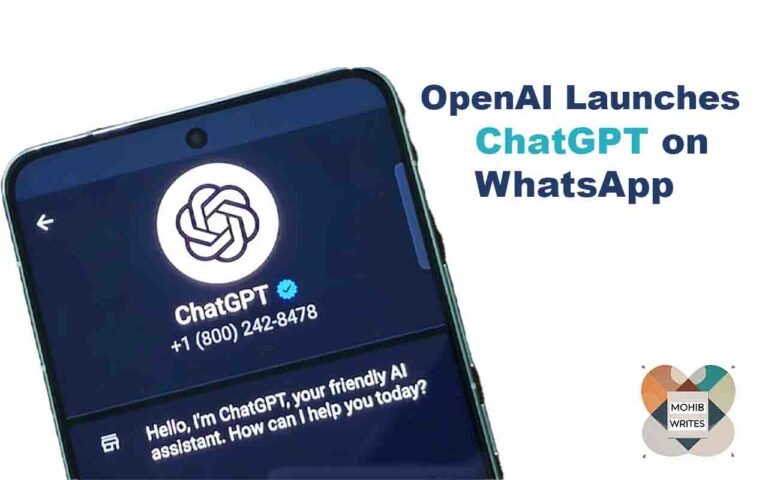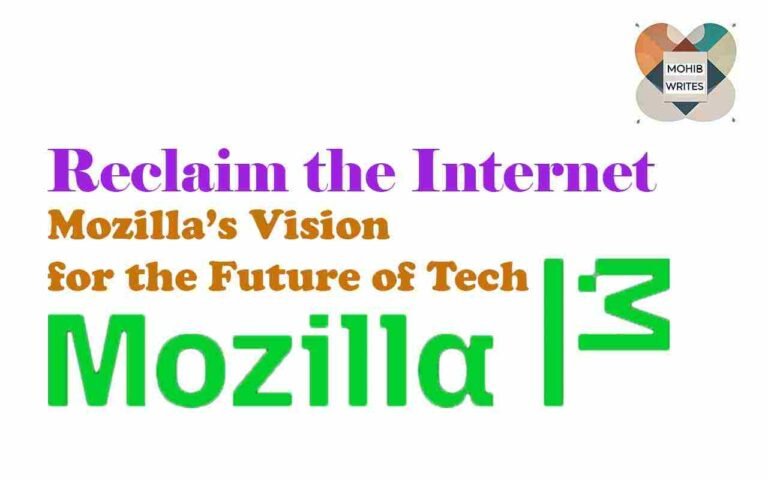In the last article, we talked about how to build the daily writing habit but for effective writing, you will need to master the art of storytelling on social media. For this purpose, you need more than catchy slogans – you need compelling narratives that resonate. Research shows audiences are 22 times more likely to remember facts when they’re wrapped in a story, and posts built around a clear narrative often get 2–3× more engagement than plain.
In this comprehensive guide, we’ll answer how professionals and creators can weave storytelling techniques into their posts – using frameworks like the Hero’s Journey, Problem-Solution, Before-After-Bridge, and Nested Loops – along with cinematic visuals, AI tools, and data-driven strategies to engage followers and drive results.
Even with AI tools like ChatGPT at our fingertips, authentic stories are what capture attention. Our brains literally reward storytelling: when we encounter a narrative, we release oxytocin (the “bonding” hormone) that builds trust and connection. Stories create pattern interruptions in busy feeds and spark emotional resonance.
The key is structuring your message. For example, position your customer as the hero using the Hero’s Journey framework, or outline a clear “before and after” transformation with the Before-After-Bridge (BAB) format. Done well, this approach cuts through the noise and turns viewers into advocates – narrative posts are about 22% more likely to be shared than plain informational posts.
In short, mastering storytelling means turning your marketing content into memorable experiences that audiences eagerly pass along.
Why Storytelling Works on Social Media
Storytelling isn’t a buzzword – it’s backed by science and marketing data. As one Stanford study found, facts presented in a story are 22× more memorable than facts alone. Neuropsychology confirms it: tales activate multiple brain regions and even trigger oxytocin, deepening the audience’s engagement and loyalty. For instance, neuroeconomist Paul Zak showed that viewers of an emotional video (about an ill child) had a surge of oxytocin and were significantly more likely to take action (like donating) afterward.
This emotional power is why storytelling content often outperforms straightforward marketing. Marketing analyses report that strategic narratives consistently beat plain promotions by 2–3× in engagement and conversion metrics. In practice, this means a well-crafted story can hook people faster, hold their attention longer, and motivate them to share or act.
By speaking to both the heart and mind, stories forge real connections. As Hashmeta notes, narratives engage emotional and rational brain centers, creating experiences people recall when making decisions.
In other words, an engaging social post is like a spark – it lights up more parts of the brain than a dry product listing. Combined with social algorithms that favor content that holds attention (longer watch times, comments, etc.), the result is clear: story-centric posts drive far stronger results than product-only messages.
Key Storytelling Frameworks for Social Media
The most effective stories use proven frameworks. These narrative structures give you a blueprint so you can focus on content, not on inventing structure from scratch. Here are the top frameworks every content creator should know:
Hero’s Journey (Monomyth)
In the Hero’s Journey, a protagonist faces a challenge, grows, and returns transformed. On social media, your customer is the hero and your brand is the guide. For example, Nike ads often cast the athlete as the hero struggling through obstacles and ultimately reaching greatness.
To use this framework, introduce the hero’s “ordinary world” (their current need or problem), then the “adventure” (how they discover your solution), show their struggles, and finally their triumphant transformation with your brand’s help.
It’s perfect for brand stories and testimonials – think of an influencer overcoming a fitness plateau with your workout program, or a student achieving success thanks to your educational platform.
Problem–Solution (and PAS)
The simplest narrative is Problem–Solution: first you highlight a pain point, then you present your offering as the fix. This can be enhanced with Problem–Agitate–Solution (PAS) by briefly amplifying the pain before revealing your solution.
For instance: “Struggling to grow your Instagram following? You’re not alone – millions of creators spend hours on content with little return. But what if you could gain 10,000 followers in 30 days? Our proven strategy makes it possible”.
This format is ideal for ads and short videos where you quickly grab attention with “the problem” (e.g. low engagement), agitate it (describe the frustration), then show the product/service as the solution. Always end with a clear call-to-action so viewers know what step to take next.
Before–After–Bridge (BAB)
The BAB framework paints a vivid contrast between “before” and “after,” then bridges them. First depict the audience’s current situation (Before), then show an ideal scenario after using your solution (After), and finally explain how to get there (Bridge). For example, a designer might post: “Before: Your home feels cramped and uninspired. After: A bright, organized space where you love to live. Bridge: Our custom furniture transforms any room in just two days.”
BAB is very social-friendly – a quick image slide or short video can show the “Before” state followed by the “After.” It’s especially effective in ad copy and demo videos, because the stark transformation clearly highlights the value.
Nested Loops
Nested Loops is a more advanced technique: you start one story, pause to tell a secondary one, then return to finish the first. This “story-within-a-story” keeps viewers intrigued by delaying the payoff. According to storytelling experts, “nested loop storytelling… places your most important story – the core message – in the center, and use surrounding stories to elaborate”.
For example, a long-form brand video could begin with your founder’s journey, cut to customer success stories for context, then circle back to show how the founder’s vision led to those results.
This depth of narrative holds attention on platforms that support longer content (like IGTV, Facebook video, or YouTube), and is great for detailed thought-leadership pieces.
Master the Art of Cinematic Storytelling
For video-driven platforms, cinematic storytelling takes your content to the next level. This means using high-quality visuals, film-style pacing, and emotional arcs as if you were making a short movie.
When done right, it significantly boosts engagement: one marketing study notes that combining “high-quality, emotionally engaging cinematic storytelling” with social media can maximize exposure, drive engagement, and improve conversion rates.
Key tips for cinematic social content include:
- Plan your shots and edits: Treat each post like a mini-production. Use storyboards or shot lists to ensure every scene serves the narrative.
- Optimize length and format: Social viewers have short attention spans. Make videos punchy – TikToks and Reels usually do best around 15–30 seconds. Cut quickly between scenes, and use dramatic visuals (bold colors, dynamic angles) to hook the eye.
- Use captions and thumbnails: Many users watch on mute, so subtitles ensure your story’s message isn’t lost. Create compelling thumbnail images that summarize the drama or transformation – this boosts click-through.
- Craft a visual storyline: Follow structures like Pixar’s famous formula (“Once upon a time… every day… until one day… because of that… until finally…”). Even short clips can use this arc: set up a character and challenge, then show the resolution.
- Evoke emotion with music and effects: A well-chosen soundtrack and thoughtful sound design can make even a 15-second clip feel profound. Emotional cues (inspiring music, close-up expressions) help viewers connect deeply.
By elevating your content with cinematic techniques – crisp cinematography, narrative music cues, and tight editing – you “create captivating, share-worthy stories” that resonate. Viewers are more likely to stop scrolling for a polished, emotionally-charged video than for a static ad.
Persuasive Storytelling Techniques
Good storytelling on social media doesn’t just inform – it persuades. To move people to action, incorporate persuasive elements into your narrative:
- Hook, Story, Offer: Start with a bold hook (an intriguing question or statement), build a relatable story, then end with a clear offer or call-to-action. For example, begin a post with an attention-grabber (“What if I told you your phone could help you lose weight?”), tell a mini-story of someone who did just that, and conclude with “Swipe up to download our fitness app.” This classic sequence (made popular by sales experts) keeps the audience engaged and prompts them to act.
- Emotional triggers: Use emotional contrast in your story – pain vs. pleasure, before vs. after. Emphasize transformation and benefits, but don’t neglect authenticity. Genuine emotion (humor, empathy, excitement) makes your story relatable and memorable.
- Social proof within narrative: Weave testimonials or data into the story. For example, “Join the 50,000 small businesses who reclaimed their time using our tool.” Embedding facts or success stats inside a narrative context makes them more compelling.
- Scarcity and urgency: If appropriate, add a time element to the story’s ending. E.g., “And for the next 24 hours, our community gets exclusive access.” This can motivate immediate action after an inspiring narrative.
- Call-to-action as the climax: Don’t just end your story passively. Make the CTA the final climax: it should feel like the next step of the journey. For instance, after describing a dream outcome, say something like “Now it’s your turn” with a link or prompt.
Together, these persuasive techniques ensure your storytelling isn’t just nice to hear – it drives results.
For example, framing an ad as “tell[ing] a story that highlights the journey of the product from farm to table, emphasizing tradition and craftsmanship” (as an AI tool once suggested) can make even an advertisement feel heartfelt and relatable.
The ultimate goal is to engage emotions, then guide that emotion into a clear action.
Platform-Specific Storytelling Strategies
Each social platform has its own vibe, so adapt your storytelling to fit the medium:
- Instagram (Posts, Stories, Reels): Instagram is visual-first. Leverage high-quality photos and videos. Use carousels or multi-image posts to show a sequence (good for BAB “before/after” stories). The built-in Stories and Reels features are perfect for bite-sized narratives. For example, share behind-the-scenes clips or a step-by-step “day in the life” sequence. Try the “rule of thirds” in your composition and keep a consistent color palette to reinforce your brand. Brief, punchy captions paired with striking imagery win here. (An Instagram carousel showing “Step 1… Step 2… Step 3…” can effectively tell a mini-journey.)
- TikTok (Short-Form Video): TikTok demands an immediate hook. Start your video with a surprising visual or statement in the first 1–2 seconds. Use trending sounds or memes to fit in with viewer expectations. Since TikTok videos max out at about a minute (often shorter), use condensed frameworks: a quick Problem–Solution or “Tiny Hero’s Journey” in 15–30 seconds can work wonders. Include on-screen text and captions (users scroll fast!), and always end with a clear call-to-action (e.g. asking viewers to follow, like, or visit your site) to capitalize on the momentum.
- Facebook (Longer Stories & Live Video): Facebook allows longer posts and prefers authentic content. This is where in-depth storytelling shines. The Humans of New York page proves that even multi-paragraph personal stories (with a single portrait photo) can generate massive engagement. You can write a heartfelt anecdote as a post, or go live for a casual talk that feels genuine. Use Facebook’s Notes or Group features for longer-form narratives. Embedded videos should still be visually compelling, but here you can afford to build tension slowly.
- LinkedIn (Professional Storytelling): LinkedIn audiences appreciate educational narratives and thought leadership. Use storytelling to demonstrate expertise. For instance, start a post with a common industry pain point, tell a story about solving it, and conclude with insights or tips. The Contrast Framework works well here – e.g., “Most companies approach marketing this way… whereas our strategy flips it to produce better ROI.” Long LinkedIn articles (Pulse) can use Nested Loops or Hero’s Journey to delve into case studies or personal career stories. Always tie the story back to a lesson or actionable insight relevant to professionals.
- Twitter (X.com, Threads & Concise Stories): X.com is about brevity, but threads allow extended storytelling. Use a series of tweets to unfold a narrative (like a mini-chronicle or a step-by-step guide). A strong hook tweet (often with an eye-catching image or statistic) draws readers into the thread. Branded hashtags help weave user-generated stories into your narrative. For example, invite customers to share “#MyBrandStory” moments and retweet them with commentary – this creates a community-driven narrative.
- YouTube & Facebook Video (Longer-Form Video): 85% of US internet users watch video monthly, so video storytelling is critical. YouTube and Facebook video allow deeper storytelling (think mini-documentaries, tutorials, product reveal narratives). Keep videos concise (TikTok-style shorts vs. full-length). Use catchy intros (much like TikTok) to hook viewers, then deliver the story. For example, a brand might run a series of short documentary-style clips: Video 1: founder’s origin story. Video 2: customer success story. Each should loop back to the central message. Always include subtitles, and create a compelling thumbnail/ title that promises a narrative payoff (e.g. “How This App Changed John’s Life”).
No matter the platform, the core is the same: know your audience and tailor the story style to them. A dazzling Instagram reel might not work on LinkedIn, but the same message – customer transformation, behind-the-scenes passion, or expert advice – can be told differently on each channel.
Leveraging AI in Storytelling
Artificial intelligence is becoming a powerful ally in social media storytelling. Tools like ChatGPT and DALL·E can spark ideas, draft scripts, and even generate visuals that bring your narrative to life.
For example, ChatGPT can help you brainstorm story angles or write first drafts of captions, freeing you to focus on emotional impact. Incorporating visuals into AI-generated content makes stories even more immersive.
As one guide notes, “Incorporating visual storytelling in ChatGPT content… creates a more immersive and interactive experience for the audience”. In practice, this could mean asking ChatGPT to outline a story-based ad, then using generative art for an eye-catching graphic, or using AI video tools to stitch together clips.
Moreover, AI can optimize your storytelling strategy. Platforms like Hootsuite’s OwlyWriter or social media assistants can analyze engagement data and suggest content calendars or trending topics.
For example, feeding ChatGPT a prompt like “I’m looking for creative ideas for my upcoming social media posts” can generate a month’s worth of post ideas in seconds.
And tools like ChatGPT itself can even draft those posts: “What topics should I include in my content calendar?” – and receive a well-structured plan in return. The result is more consistent, targeted storytelling.
That said, human creativity is still king. Use AI-generated drafts as a starting point, but always infuse your unique voice and brand perspective. After all, storytelling is about genuine connection. When used wisely, AI can streamline your workflow – even automating responses or analyzing comments – so you can focus on crafting the narrative.
As another expert piece points out, leveraging AI tools like ChatGPT and OwlyWriter helps “streamline your social media management, ensuring your content is always fresh, engaging, and on schedule”.
Measuring Storytelling Effectiveness
Finally, remember: you can only master what you measure. Track how your stories perform and refine as you go. Key metrics include Engagement Depth (not just likes, but comments, shares, watch time) and Narrative Retention (do people remember your message?). For instance, Hashmeta suggests tracking the sentiment of comments, completion rates of videos, and follow-up surveys to see if the story’s key points stuck.
Also tie stories to business outcomes. You might track conversions or sales driven by story-driven campaigns. (One analysis even found that narrative content delivered 37% higher ROI than product-centric content).
Use platform analytics: view-through rates on YouTube, page visits from swipe-ups, or UTM-tagged links to see how narrative ads move the needle. A/B testing can compare different story angles (Hero’s Journey vs. Problem-Solution) to see what resonates.
Over time, you’ll build an intuition for what works. But always let the data guide you – pay attention to which stories get comments, which clips get rewinds, and which narratives spark conversations. In short, successful storytelling is both an art and a science: creative in conception, analytical in evaluation.
Conclusion
Mastering social media storytelling is a journey, not a quick fix. It means combining creativity with structure – using time-tested frameworks (Hero’s Journey, Before-After-Bridge, Problem–Solution, Nested Loops, etc.) and adapting them to each platform.
It means paying attention to cinematic details for videos, and leveraging modern tools like AI to amplify your creativity. And it means measuring and refining your efforts as you go.
The benefits are worth it: as Steve Jobs proved, “There’s a profound impact in wrapping technology in a story”. By crafting narratives that showcase transformation, human interest, or vision, you turn viewers into fans. Whether it’s a heartfelt founder story on LinkedIn, a fast-paced transformation video on TikTok, or an inspiring carousel on Instagram, you can master the art of storytelling to create deep, lasting connections.
Follow the strategies above, learn from each post’s performance, and keep iterating. Before long, your social media will be filled with stories that not only grab attention but inspire action and loyalty.
Frequently Asked Questions (FAQs)
Social media storytelling is the art of using platforms like Facebook, Instagram, or LinkedIn to tell engaging stories about your brand, products, or customers.
Rather than making dry sales pitches, you share narratives (via posts, images, or videos) that highlight values, transformations, or behind-the-scenes insights. In short, it’s about creating posts that read and feel like stories to captivate your audience.
Storytelling creates an emotional connection. Stories grab attention and make content memorable – facts packaged in a narrative stick with people much longer.
They also build trust and encourage engagement: as audiences identify with characters or scenarios in your story, they’re more likely to follow your call to action.
Effective storytelling can turn casual viewers into loyal fans and encourage them to share your content, greatly amplifying your reach.
Choose the framework based on your goal and content length.
- For broad brand narratives or customer journeys, the Hero’s Journey is powerful.
- If you need a quick, direct message (especially in ads), try Problem–Solution or Before–After–Bridge (BAB).
- For deeper content (webinars, whitepapers, long videos), advanced frameworks like Nested Loops or the Contrast Framework can add intrigue.
The list above matches each framework to use cases (e.g. BAB for social ads, PAS for persuasive copy). Often, a blend works: start with a Hook, tell a mini-story, and offer a solution at the end.
Instagram is a visual platform, so lead with compelling images or videos. Use the carousel feature to tell multi-part stories (for example, slide 1 = problem, slide 2 = solution, slides 3–5 = transformation).
Keep captions brief but enticing, adding context or emotion. Behind-the-scenes posts, user testimonials, or day-in-the-life snippets work great. Maintain a consistent aesthetic (colors, style) so followers immediately recognize your narrative thread.
Don’t forget Stories and Reels – use them for quick, personal stories (e.g. a founder’s message or customer shout-out) to make your brand relatable.
Go beyond likes. Key indicators include engagement depth (comments, shares, saves, watch time) and retention (how long people watch your video or read your post). Monitor how many people finish your story versus drop off.
Look at conversion metrics too – for example, track link clicks, sign-ups, or sales that came from story-driven campaigns.
Surveys and feedback can gauge recall of the story. Interestingly, research indicates that story-led campaigns often yield higher ROI – one study found narrative content gave 37% more return than straight product posts.
Use A/B tests (two versions of a story) to see what resonates best with your audience.
Absolutely. AI like ChatGPT can suggest story ideas, help write first drafts of captions or video scripts, and even create multilingual content.
For example, you can prompt ChatGPT with “Outline a story about how our product solved a customer’s problem,” and use its output as a starting point.
Visual AI (like DALL·E or generative video tools) can create images or clips that match your narrative theme.
AI analytics tools can also analyze engagement to recommend which story angles work best.
Just remember to humanize the output – use AI for efficiency, but always inject your own brand’s voice and real emotions into the final story.
- Think like a filmmaker.
- Plan your content with a clear beginning, middle, and end, even for short posts.
- Use high-quality visuals: good lighting, composed shots, and dynamic camera work if possible.
- Keep videos concise and impactful, with sharp edits and maybe dramatic music.
According to experts, optimizing your video length for social (shorter and punchier) and creating eye-catching thumbnails dramatically increase engagement.
Even on a budget, you can apply “movie techniques”: use a narrative voiceover, capture genuine reactions, or emulate cinematic filters.
The goal is to make viewers feel as if they’re watching a mini-movie that tells a compelling story about your brand or product.
Track storytelling-specific KPIs.
- For videos, look at completion rates and repeat views.
- For written stories, check how long people spend reading or if they click “see more.”
- Surveys or comments can reveal if audiences recall key points.
Compare these metrics to your usual content. If possible, link stories to conversions (discount codes in a story video, for example).
Analytics tools now allow you to tag and trace content: see how many site visits or downloads came from a particular story post.
Over time, you’ll spot patterns: maybe “Customer success story” videos always spike engagement, while pure sales pitches flop. Use those insights to refine your narrative strategy.
- Be authentic and audience-focused. Even with complex frameworks and high-tech tools, the heart of storytelling is connection.
- Listen to your audience’s pain points and desires, and tell stories that resonate with their experiences.
- As you’ve learned, frameworks are guides – the real magic comes from genuine emotion, relatable characters (which could be customers or even your brand), and clarity of purpose.
- When you put your audience at the center of the story, every post becomes more engaging.
Keep iterating, testing, and learning from your data, and soon you’ll truly be mastering the art of storytelling on social media.


